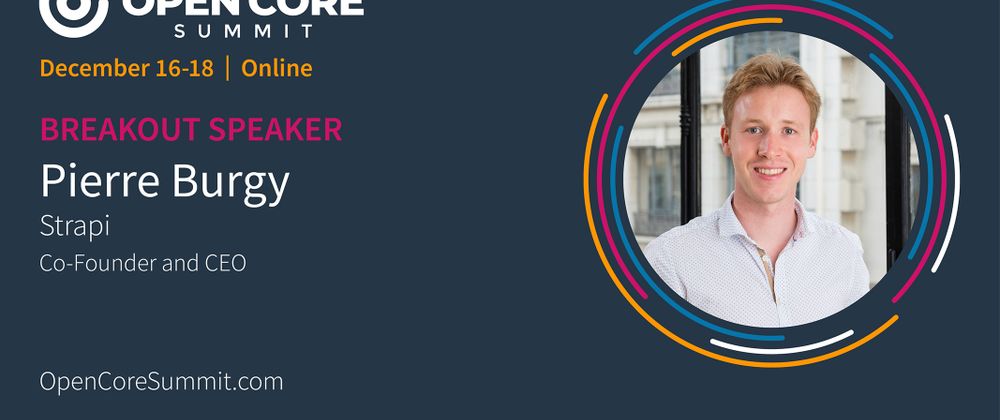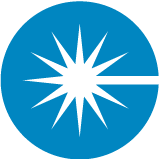Pierre Burgy is the Co-Founder and CEO of Strapi, the leading open-source headless CMS.
Relevant Links
LinkedIn - Twitter
In this OCS 2020 Fireside chat, Joseph Jacks and Pierre Burgy (CEO of Strapi) share some tips to build commercial open-source software from scratch.
How did you come to learn about open source, and why did you create Strapi? — 0:40
Pierre describes creating Strapi in 2015 while working as a freelance developer as students, using lots of traditional CMS. But when it came to mobile or web apps, all of the technologies were designed for APIs, but WordPress didn’t provide API.
So Pierre and co-founders created own piece of software that they started using for clients, and realized others needed this as well, so made Strapi open-source at the end of 2015.
Decided to open-source Strapi because any CMS had to be open-source.
Other than solving problems of APIs that are available with new frameworks, what are the critical design decisions and intentional actions in the first few months that really caught people’s attention and caused people to get excited about Strapi? — 2:45
Pierre talks about publishing release news on Reddit and a release blog post. It didn’t boom at first, but two years later, in mid-2017, finished student life and started working on Strapi full-time. Completely rebuilt Strapi from scratch thanks to feedback from users from first two years, introduced plug-in system, and published Strapi v3 in October 2017 along with new website and documentation, along with a big announcement on Reddit.
Usage started increasing quickly, and that was the beginning of the story.
What did the re-write involve? What did it look like? — 5:20
Complete code base rewrite. Switched from Angular 1 to React. Making it nice for end user, and making it extensible.
Want to build ecosystem of plug-ins, and introduced plug-in system with v3. “I think that really made the difference.”
“React was an important choice, because developers need to be able to easily extend the admin panel. To do this, it was better with React than with Angular.”
What was the thing created the headless CMS movement? Can you explain what a headless CMS is? —7:15
Pierre explains a headless CMS. Traditional CMS would include a backend where you write posts, and the frontend where users see the content.
Content now also has to be displayed in mobile applications and sometimes IoT, also sometimes interconnected in terms of services, and the way to create a website changed over the years with developers moving to modern technologies and frameworks, which are all designed to be connected to APIs.
“Headless” means there is no frontend anymore in the CMS. A lot of traditional CMS’s try to have the headless approach, but there are two problems. (1) They aren’t lightweight, coming with all of the front-end resources. (2) All of the advantages of traditional CMS’s is the ecosystems of plug-ins, but all of the plug-ins are built for traditional use cases. When you use them as a headless CMS, you lose the value of the headless CMS’s, and there are performance issues.
Are the legacy CMS’s evolving into headless, or is the headless CMS landscape creating a new CMS category, or are both things happening? — 9:30
Both things. Strapi is pure headless CMS. Traditional CMSs are also going in that direction.
When did you start to think about starting a company around Strapi? Explain that whole journey and how you learned about the process of becoming a founder. — 10:25
Started as a side project, and that was only ambition at the beginning. After seeing all of the users who felt Strapi was “promising”, founders knew they were on to something but product wasn’t as featured as they expected to yet. At that point, they decided to incorporate company around what could be the next de facto CMS.
What were the first things you wanted to do when you started the company? Was it raise money or? — 11:45
At beginning, raising money wasn’t in mind, because traction was too low and had too much to do in product. Decided to work as freelancers to make a bit of money at the beginning.
Quickly realized they spent a lot of time working for clients, but 90% of time was for very custom things for clients, and they weren’t making money on clients.
So decided to make enough money to have a few months of runway just to have time to raise money. That’s when they switched full-time on project, released v3, and started fundraising.
Difficult to raise funding in open source because you need really strong traction. Finally raised seed round in 2018, enabling co-founders to stay full-time on the project and hire first employees.
How have you navigated the last year or so of growth? What have you observed? Talk about the last 18 months, including raising a Series A from Index Ventures. — 14:20
At beginning of 2018 had massive increase of usage, which led to seed round. Enabled company to hire more people and hire more senior people (former VP of Community at Docker).
Also started seeing massive adoption of headless CMS from big companies. Confirmed a trend in their market.
Strapi’s plan was to raise Series A at end of 2020. Index contacted them and was interested investing. Closed Series A at the beginning of the lockdown.
Usage hasn’t been impacted positively or negatively. Usage keeps growing quickly, but no growth like Zoom, which benefits directly from the pandemic.
Have also seen that customers are less willing to pay, because lots of widgets are restricted. But with open source, usage still keeps growing, because companies know they won’t be locked-in.
Company was remote-friendly, now remote-first.
What are your observations on remote work and a remote-friendly culture? What are you still figuring out? — 18:19
To have an effective remote company, key is communication. Documenting all the process, writing much more, having a written decision process so you can remember decisions and do it asynchronously.
Over-communicate is most important.
Important to take care of the team, in any remote company, even more so this year.
What have been the most critical roles you’ve had to hire for, and have been the most important for you, on journey from co-founders to 25 employees? — 19:37
Pierre highlights first hiring a front-end developer, and then a lead backend engineer, who now leads all technical aspects of Strapi.
Enables founders to delegate the technical, and not be technical founders blocking every decision -- instead, founders could dedicate to higher-level strategy.
Pierre also highlights importance of hires on Marketing side.
What has it been like shifting from a code committer to a CEO of a company? What have you learned? Are you still a core committer to the codebase, as well as running and scaling the company? — 21:33
“No, I don’t commit anymore, not in the product. I’ve been out of my comfort zone every day.”
Pierre highlights learnings with people, hiring the best people, creating a culture, sharing the vision. That’s most important.
Also dealing with investors, in terms of fundraising and relations.
Those are two most important learnings.
I’m curious how you think of open-source governance. Who can contribute to the codebase, who can merge commits. How has the governance model evolved and how do you think about it? — 22:48
Pierre speaks about the roadmap where anyone can upvote requested features, and company has final say. “It’s in our interest to release the features that are most requested, so at the end of the day, I think everything wins.”
Pierre also speaks about reviewing, accepting, and refusing pull requests as part of the job.
In every sprint, developers include issues and pull requests from the community, without losing focus on needed features.
“What’s going to be a gamechanger is the plug-in API. … Offering plug-in APIs allows anybody in the community to build their own features, and we don’t even need to build these features, unless we want to add them to our marketplace for example. But basically anyone can do anything, and it’s a good way to unleash what the community can do.”
How have you defined and built the enterprise version of Strapi? How do you prioritize commercial features and value adds for customers, as well as, who is your customer? — 25:14
Pierre details decision to start with open core model. Difference between community edition and enterprise edition, is enterprise adds feature for Marketing teams.
Don’t want to create any frustration for developers, so if it’s a feature for developers, it’s free. “
“That’s a rule.” When it’s a feature for marketing teams, they make it paid.
Launched enterprise edition with first enterprise feature: role-based access control. That was an enterprise feature because if you need access control, it means you have many people accessing the CMS.
Strapi gives 3 roles by default (admin, editor, author), and if you want more roles, you have to use the Enterprise Edition.
With the roadmap, always try to implement the most upvoted features, whether paid or not.
Pierre details work on content monetization. Limited to 3 languages in Community Edition, unlimited languages in Enterprise Edition.
Pierre also details importance of Single Sign-On (a “dealbreaker” in many cases.)
Always try to prioritize according to the number of requests, independent of whether it’s paid or free.
*So marketing teams in enterprise companies, like Fortune 5000 globally, enterprise marketing teams. How do you think about pricing model? Are you pricing per site? Per top-level domain? How have you thought about that? — 28:40 *
“That’s the big thing we’re actively working on at the moment.”
Currently pricing based per project and per custom role. That is fluid, in process of doing a lot of user research. Pierre speaks about how pricing model could change.
How do you see the market landscape currently? Who are you competing with? What are the forces of competition? (Not necessarily another vendor or technology, could be another action, e.g. only open-source Strapi). What are the market options? How do you see the future of Strapi executing over the next 3-4 years in this evolving market? — 30:25
Pierre describes competing with traditional CMS trying to go headless, and lots of competitors in the headless CMS landscape — but most of them are SaaS (e.g. Contentful)
Market is divided into SaaS on one side and open source on the other side.
Strapi is currently the #1 open-source headless CMS, and that’s their unique positioning. Goal is to be not just OSS leader, but to become the de facto CMS, including offering of a hosted version of Strapi in the future.
Pierre details the benefits of hosted for open core companies and for users.
What are your biggest challenges? How are you thinking about removing friction, moving faster? — 32:35
Pierre highlights the go-to-market strategy, iterating on pricing, finding the strategies.
Then, it’s people. “At the end of the day, it’s all about people, hiring the best people, and making sure they can express themselves to the company.”
What do you wish you knew starting out, that you’ve learned over the past few years? — 33:30
Pierre highlights tending to the users. Users always say the truth. Founders have lots of ideas, but lots of biases. “Only truth is from the market.”
“If you have an idea, build it, but even before building it, ask people, ask your future users, and they will tell you where you have to go. Just follow this path, and you can be sure you’ll arrive at something very successful.”
Share your questions and comments below!



Top comments (0)